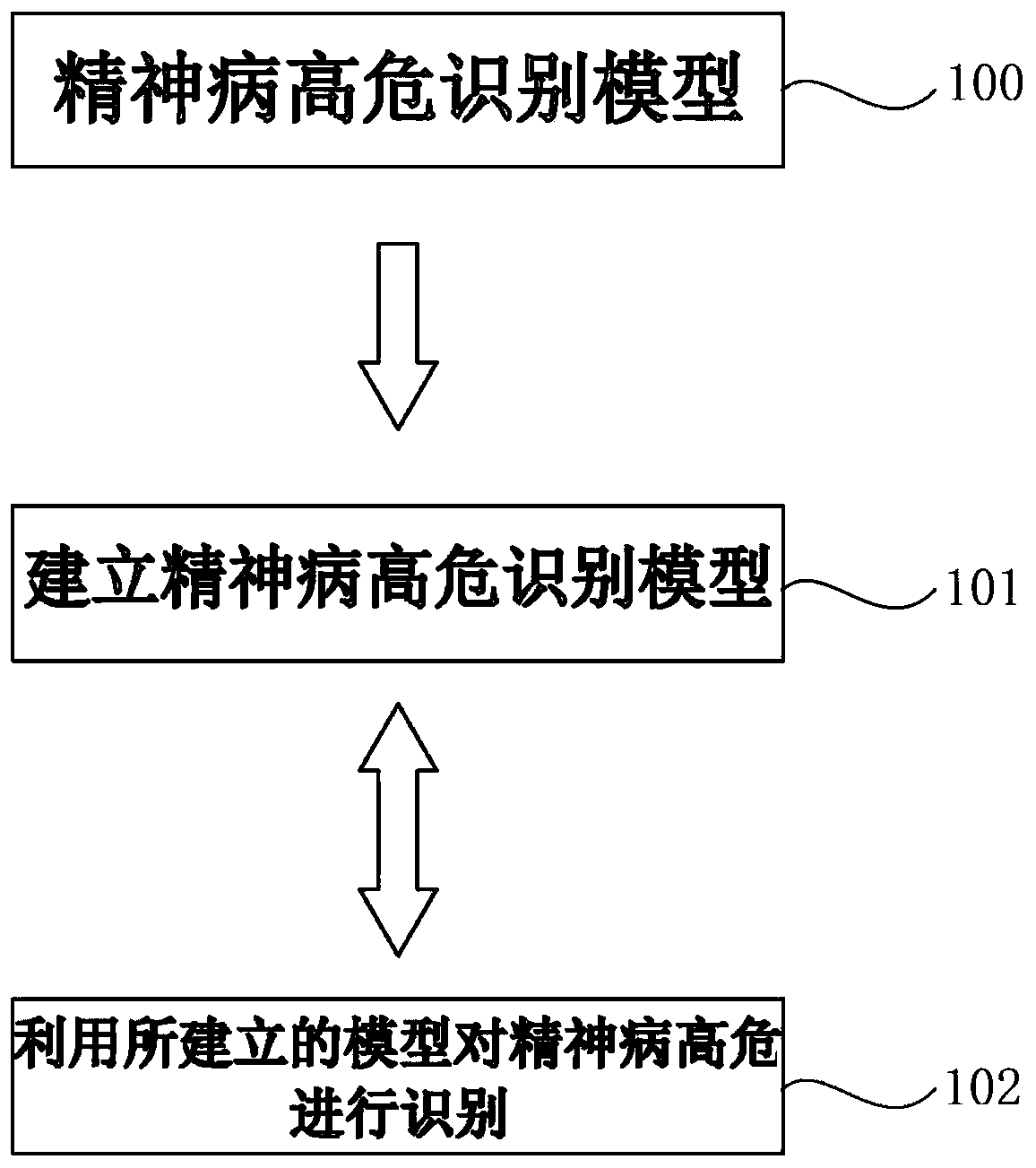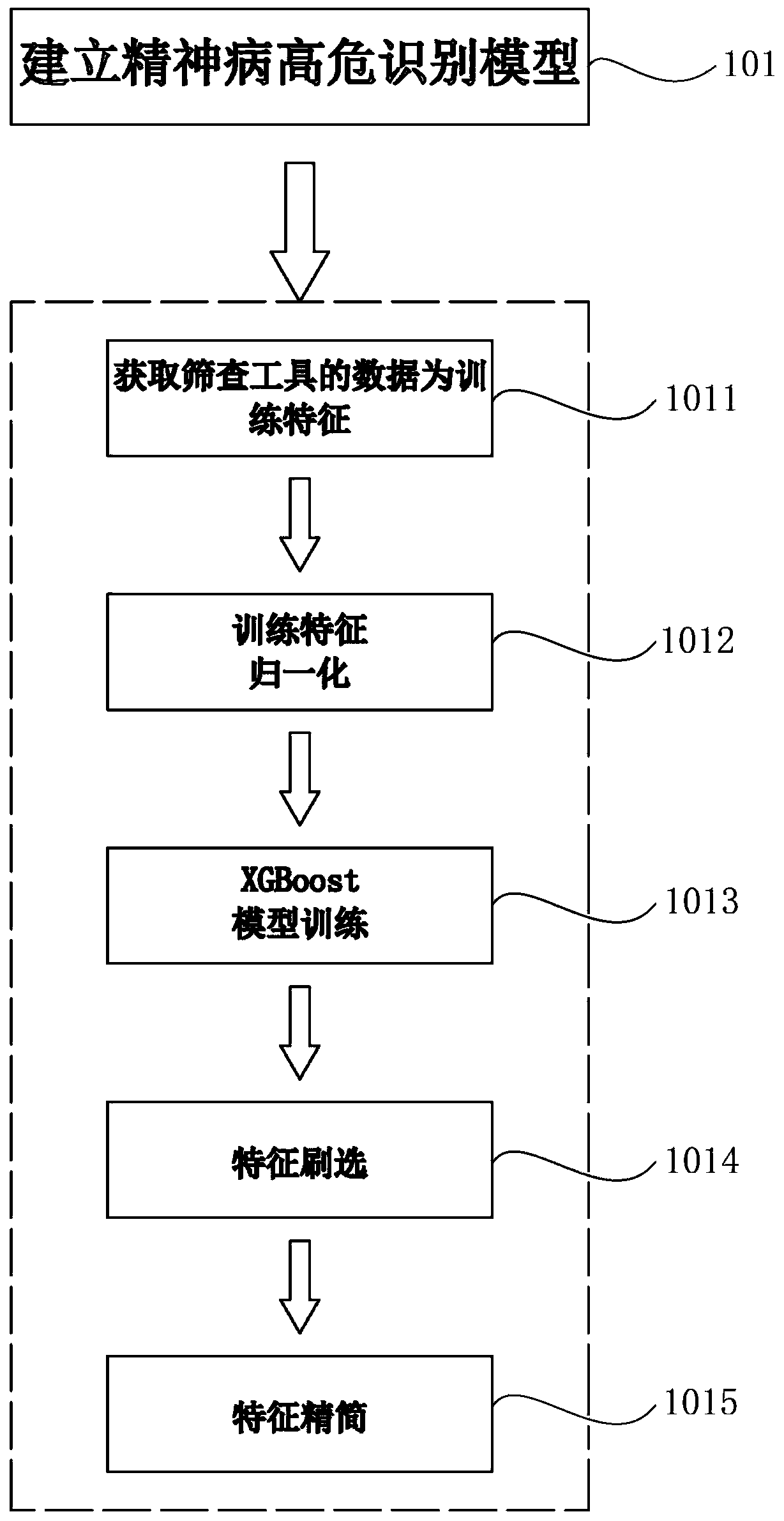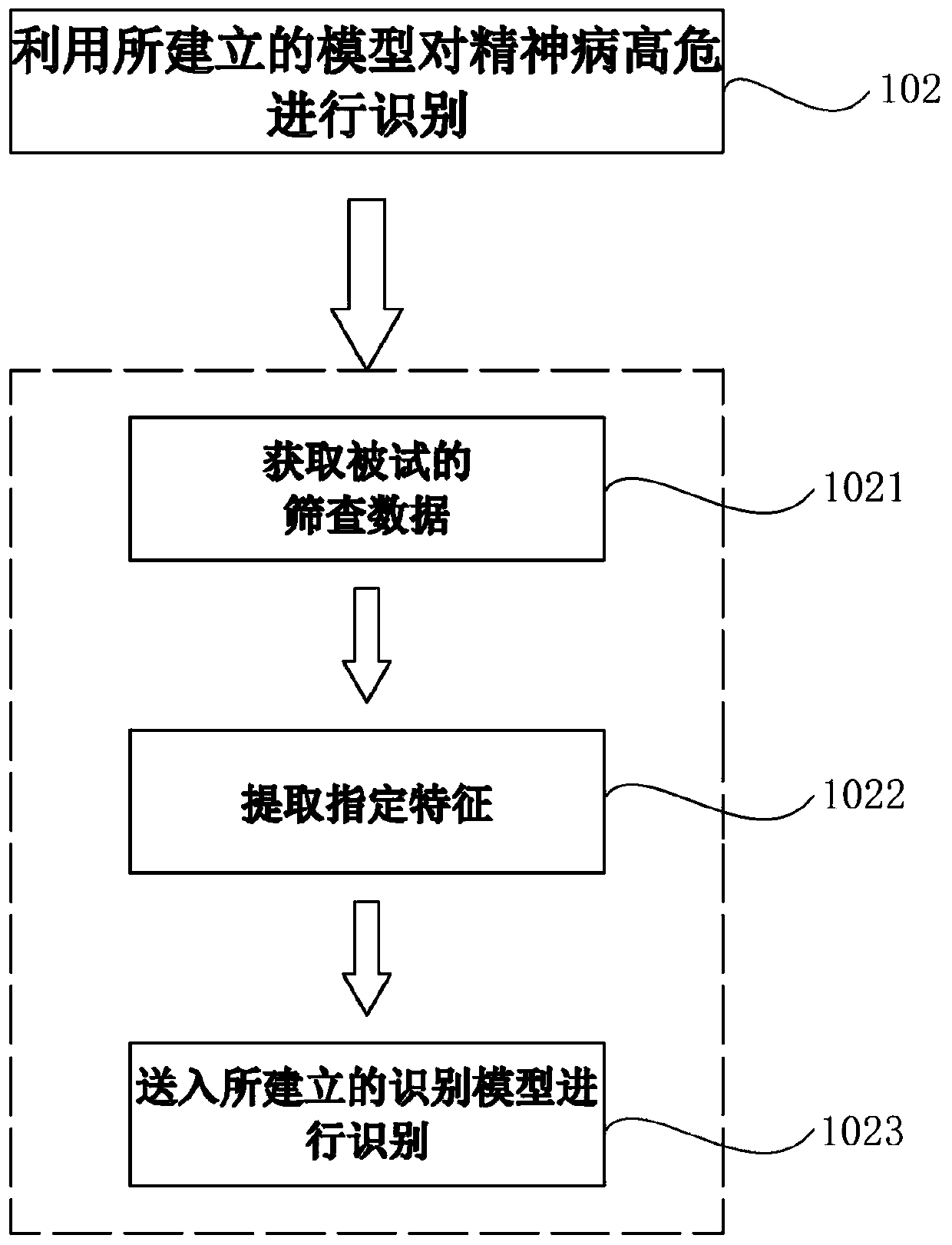Psychosis high-risk identification model based on extreme gradient boosting algorithm
A recognition model and psychosis technology, applied in the field of high risk identification of mental illness, can solve the problem that the high risk identification model of mental illness has not been reported, and achieve the effect of reducing the burden on families and society and improving the recognition rate.
- Summary
- Abstract
- Description
- Claims
- Application Information
AI Technical Summary
Problems solved by technology
Method used
Image
Examples
Embodiment 1
[0043] Please refer to the attached figure 1 , with figure 1 is a schematic plan view of a high-risk identification model for mental illness based on the extreme gradient boosting algorithm of this embodiment. The high-risk identification model for mental illness (100) includes establishing a high-risk identification model for mental illness (101) and using the established model to identify high-risk psychosis (102);
[0044] Please refer to the attached figure 2 , with figure 2 It is a schematic plan view of the process of establishing a high-risk identification model for psychosis based on an extreme gradient boosting algorithm in this embodiment.
[0045] The described establishment of high-risk identification model for mental illness (101) is divided into:
[0046] The data obtained for the screening tool are training features (1011), training feature normalization (1012), XGBoost model training (1013), feature brushing (1014), and feature reduction (1015);
[0047]...
Embodiment 2
[0053] A total of 50 items were used in college students using self-made questionnaires (including prodromal prodromal status questionnaire short version (PQ-B), schizotypal personality disorder diagnostic questionnaire (PQD-SPD), self-made 19-item negative symptom questionnaire and 1 item of family genetic history questions such as Figure 4 ) surveyed 7391 subjects. According to the three-stage program of high-risk screening for mental illness, college students with high-risk mental illness were diagnosed: in the first stage, all survey subjects completed online or paper questionnaires, and the scores of each item in the self-made questionnaire and the total score of each subscale were counted; in the second stage In the first phase, participants with a distress score of more than 24 on the PQ-B further completed a telephone assessment, which included the positive symptom subscale of the Prodrome Structured Interview (SIPS) scale; in the third phase, trained The researchers...
PUM
 Login to View More
Login to View More Abstract
Description
Claims
Application Information
 Login to View More
Login to View More - R&D
- Intellectual Property
- Life Sciences
- Materials
- Tech Scout
- Unparalleled Data Quality
- Higher Quality Content
- 60% Fewer Hallucinations
Browse by: Latest US Patents, China's latest patents, Technical Efficacy Thesaurus, Application Domain, Technology Topic, Popular Technical Reports.
© 2025 PatSnap. All rights reserved.Legal|Privacy policy|Modern Slavery Act Transparency Statement|Sitemap|About US| Contact US: help@patsnap.com



